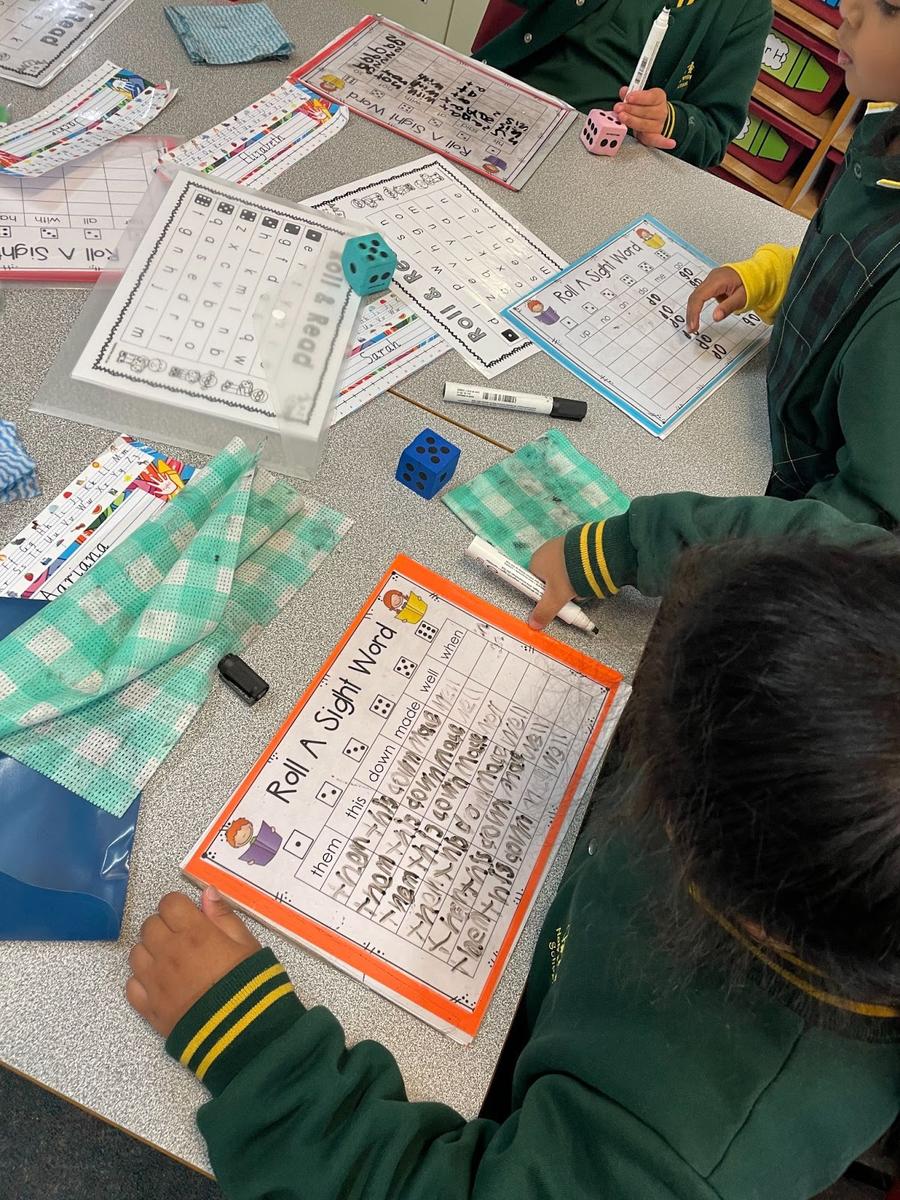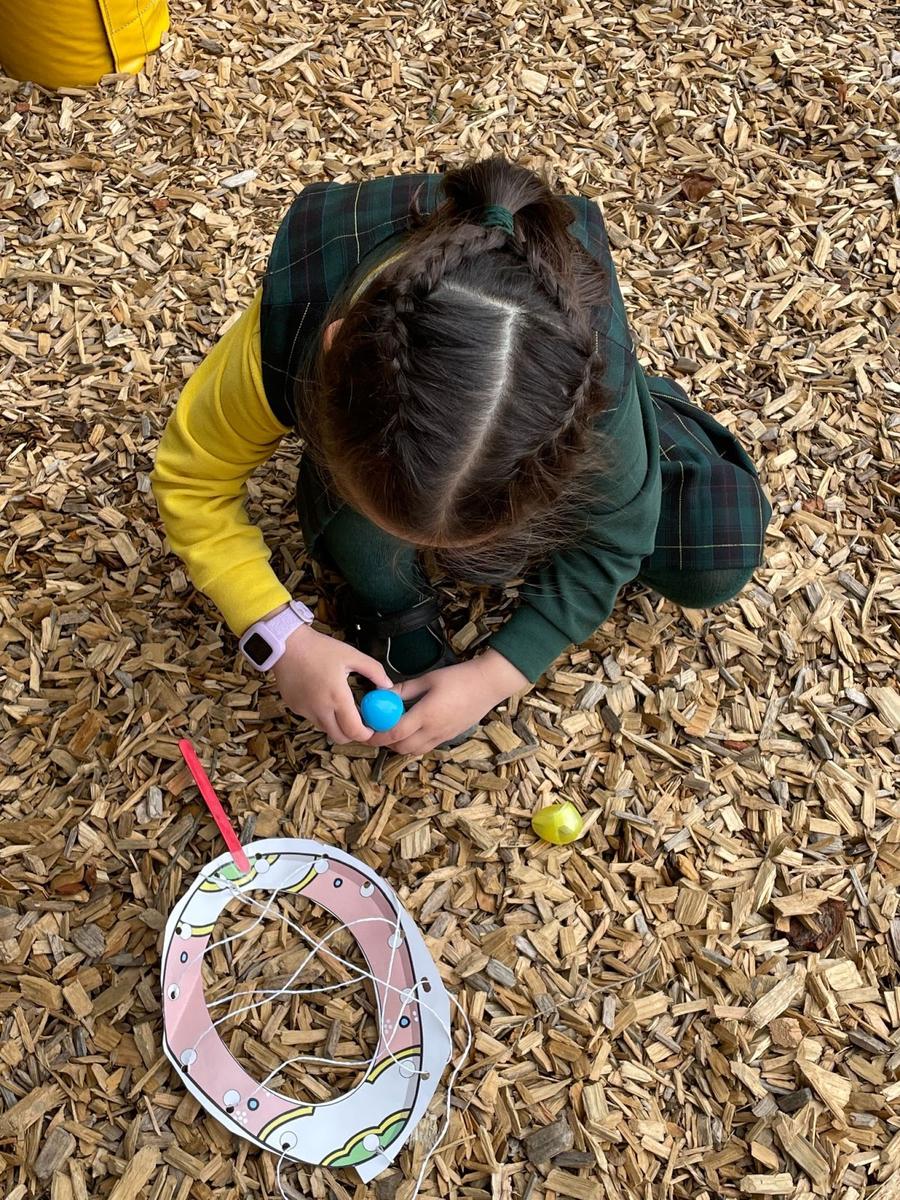What we are learning

LITERACY
Over this term we learn a lot Literacy wise! While the students are continually immersed in Language Experience opportunities, literacy sessions also include more formalised group reading and writing activities which are structured to their individual needs. We will focus on concepts about print, rhyming words, oral language, decoding unfamiliar words and comprehension of what we have read.
In SMART Spelling, we will continue to break up the sounds in words and look at the spelling choices for those sounds. Students will be taught that letters only make sounds once they are in a word and that different letters will make different sounds depending on what word they are in for example the letter /c/ in cat, city and chef.
In Reading, the students are continuing to develop early reading strategies including: using picture cues, accurately tracking words with their finger, using the initial sound and then using their knowledge of letters and sounds to attempt to read unknown words.
We will also be focusing on getting meaning from the text by asking questions that are both implied and inferred from the text.
Through the use of big books and picture books the students will begin to practise asking questions, making predictions and sharing their understanding of the events in a text. The students retell the events in terms of the beginning, middle and the end of stories.
We also continue to learn the 100 most commonly used words (common sight words) which are grouped into different colours. Different activities are planned to encourage the students to read these words automatically and then record them when writing. Once the students are familiar with the first 100 words they will begin learning the 200 most commonly used words. They will then learn to spell the 100 words, 200 words and then begin reading the 300 words.
Writing
The students will focus on structuring a sentence and spelling their sight words to include in their written work. The students will practise writing left to right across the page, making a return sweep to the next line, leaving spaces between words and simple sentence punctuation (capital letters and full stops). We are continually building the students’ self esteem and skills to foster independence and confidence as a writer. We are encouraging students to write words by recording the letter to match the sounds they hear, attempting to write initial, middle and end sounds in unfamiliar words. They will also experiment with some different writing types- e.g. recount, report.
Handwriting and developing fine motor skills will continue to be a focus. Students will learn the correct formation and size of letters along with the difference and purpose of lower case and capital letters.
Let's Read!
We encourage students to continue with regular reading at home, at least five nights a week. Students reading at home is reported on each term and students are required to change their take home book each day. Before and after reading to/with your child it is beneficial to ask questions about the text to support their comprehension.
Ideas to support at home:
· Read aloud to your child: books, newspaper and magazine articles, the back of the cereal box, labels on cans, or directions.
· Read poems aloud together to learn about rhythm and repeated sounds in language.
· Point to the words on the page when you read. Move your finger from left to right.
· Listen to your child read favourite stories to you every day.
· Go to the library together and check out books.
· Have books, magazines, and papers around the house, and let your child see that you like to read, too.
· Encourage older children to read to younger children. · Help them talk and write about what they read.
Take Home Readers
Your child will continue to bring home a book each night. We encourage students to read every night and remind parents that the home readers are supposed to be EASY texts. This is very important as it allows the reading to be enjoyable and encourages fluency, phrasing and the use of expression. If your child is sometimes tired or reluctant to read it is perfectly okay for you to share the reading or to read to your child. Research shows the benefits of students having multiple reads of texts to become more proficient and reflective in their reading. If your child finds the text difficult one night they can re-read it the next night. We would also encourage you to read texts more than once with the family. Just as we would with a favourite song or movie, we engage with it more than once.
MATHS
In Number and Algebra, students will continue to investigate numbers through sequencing numbers up to 20 and beyond. The students are looking at the number before and after to 20 eg. eg what comes before 19? 18. The students are learning to order numbers from smallest to largest eg can you put the numbers 7,2,5 and 4 into order… 2,4,5,7. The students will learn their friends of 10 eg 8 and 2 make 10, 7 and 3 make 10. The students will learn about the value of a number e.g in the number 12 it is made up of one group of 10 and two ones.
In Measurement and Geometry the students will investigate Length, learning to identify and compare the length of objects (eg. longer than/shorter than or the same length as). They will also learn to measure using informal measuring tools such as hands and feet. The students will learn to sequence the days of the week e.g Sunday, Monday, Tuesday, Wednesday, Thursday, Friday and Saturday. The students will learn to sequence the months of the year. The students will also learn to match events to particular days for example on a Wednesday we go to the Library, on a Thursday we have Italian etc.
Data: We will create class pictographs and interpret the data, identifying and comparing results.
Religious Education & Inquiry
Easter and the life of Jesus
To tie into our historical inquiry unit, students will be exploring the life of Jesus. Students will explore what similarities and differences there are between their lives and the life of people in Jesus’ time. We will look at how people got around, what foods they ate and what they wore, and compare to their own lives. Through the unit students will develop a deeper understanding of the person of Jesus and how he can connect to their lives.
Then and Now
How has life changed or remained the same over time? We will be exploring how life has changed for children over time. We will discover how inventions have changed the way we live and spend our leisure time. Over the unit we will be encouraging students to explore these ideas at home and question family members about the activities they enjoyed as children.


